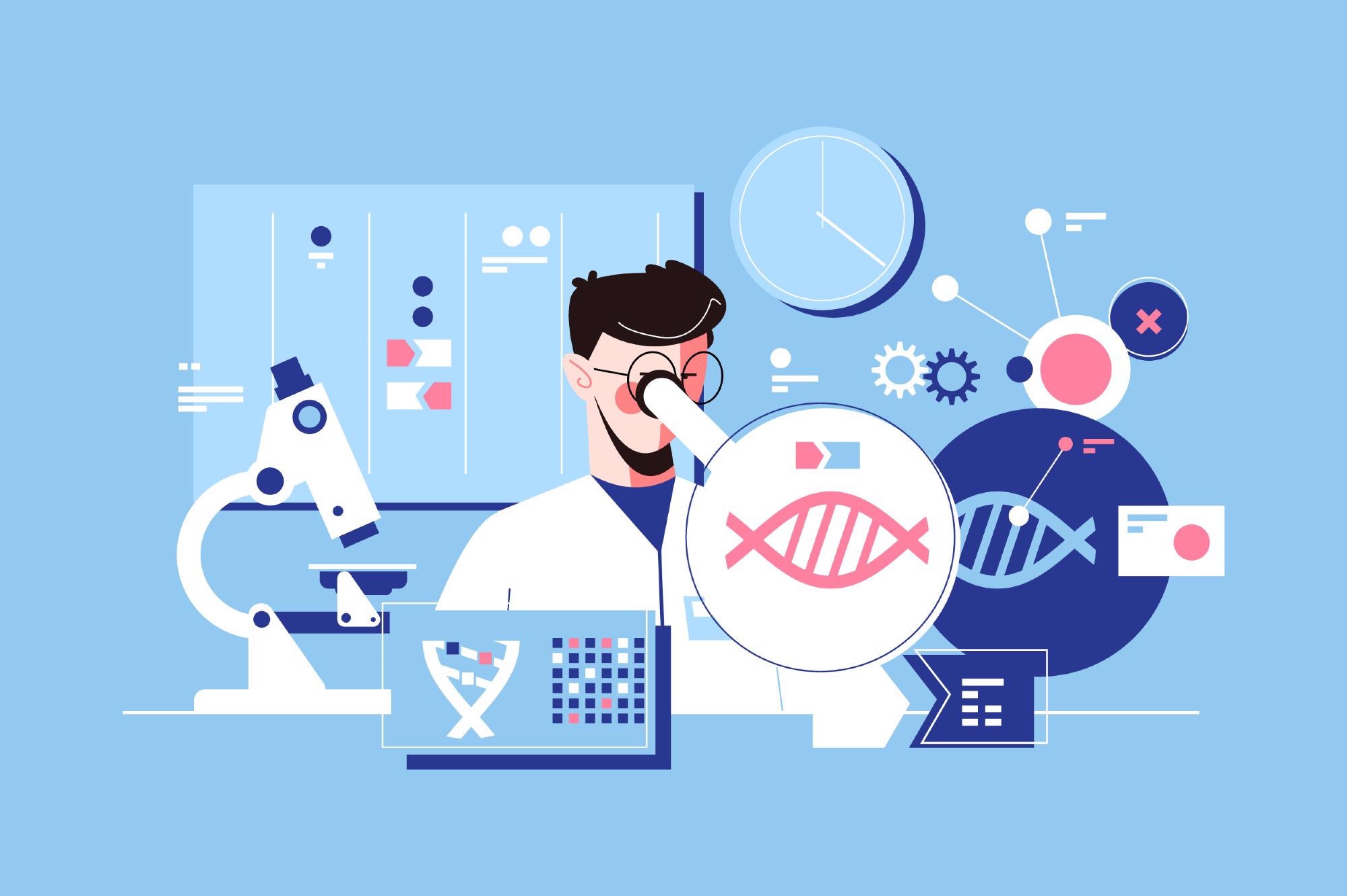Modifying the genetic structure of organisms is a central part of modern biotechnology. This article will discuss biotechnology and genetic engineering, providing an overview of the subject.
The Modern Biotechnology Field: An Overview
Biotechnology is a field that is concerned with the application of scientific knowledge and engineering to living organisms. Organisms, parts, and products of those organisms are used directly or indirectly in their natural or modified form. Biotechnology is a broad field of study used in multiple industries such as medicine, food science, and environmental remediation.
Techniques central to "modern" biotechnology include cell fusion and genetic engineering. Traditional techniques such as selective crossbreeding are also commonly employed in biotechnology, much the same way as they have been for millennia. Recently, genetic engineering has seen expanding use in biotechnology due to advances in knowledge and technology. Many staple foodstuffs, for example, are now genetically modified.

Image Credit: Kit8.net/Shutterstock.com
Genetic Engineering: An Overview
Modifying the genome of organisms such as plants, animals, and microbes has become a hot-button topic in recent years. The modification of organisms to create favorable traits began around 10,000 years ago. Still, it was not until Gregor Mendel founded the modern field of genetics in the 1800s that the process of how genetic information is transferred across generations and organisms started to become understood.
In agriculture and food production, desirable traits can be introduced that improve the yield, disease resistance, nutritional content, and flavor of crops. Individual organisms that express these favorable traits are selected for and bred, improving genetic material expression in subsequent generations. Microorganisms can be genetically manipulated to express drugs for the biomedical industry. The modern field of genetic engineering is complex and evolving.
Non-Genetic Engineering Techniques in Plants and Animals
Before listing some of the commonly used genetic engineering techniques to modify plant and animal species, exploring the non-genetic engineering methods commonly employed in biotechnology is worthwhile. While traditional breeding techniques are becoming supplanted by genetic modification, there are still plenty of non-genetic methods of engineering organisms in the food and agriculture industry.
In plants, the most straightforward technique that has been used since prehistory is simple selection. A genetically heterogeneous plant population is inspected, and those individual organisms that express favorable traits are selected. This facilitates the propagation of these traits, and seeds from these organisms are planted. Modern technology has enhanced this method.
An example of modern technology being used to enhance selection is marker-assisted selection. Molecular analysis detects individual organisms likely to express favorable traits such as increased yield and disease resistance. This method is much faster and more specific than traditional selection. Another modern non-genetic engineering method is chromosome engineering, where chromosomes from near or different species are recombined using chromosomal translocation.
Other non-genetic methods for plant breeding include embryo rescue, somatic hybridization, and inducing mutations via chemical and X-ray mutagenesis. In animals, techniques such as domestication, artificial selection, assisted reproduction, and embryo splitting are commonly employed.
Genetic Engineering in Plants
Genetic engineering works by introducing a targeted DNA change into plant cells to produce a favorable trait. Genetic engineering is faster and more specific than traditional methods. Many genetic engineering techniques can tailor plant species to express traits such as increased yield and resistance to environmental stresses and disease. Some of these are listed below.
Microbial vectors are used to introduce genetic material into plants. A common bacteria used for this purpose is Agrobacterium tumefaciens which causes crown gall disease. A. tumefaciens is unusual as it transfers a portion of its DNA into a plant host upon infection. DNA can be inserted into genetically altered A. tumefaciens organisms to introduce new genetic material.
Another process is called microinjection. In this technique, DNA is injected directly into anchor cells. However, this technique is labor-intensive and inefficient. Electroporation uses an electrical impulse to introduce DNA from a culture medium into plant protoplasts. These can then grow into fully formed plants that incorporate the DNA. Another example of plant genetic engineering is using transposons, short DNA segments that can move between locations in genomes.

Image Credit: Golden Sikorka/Shutterstock.com
Genetic Engineering in Animals
Genetic engineering in animals is different from the techniques used for plants. The primary technique, albeit a controversial one, is cloning. Additionally, animal germlines can be accessed using several methods such as direct manipulation of fertilized eggs, manipulation of sperm, using embryonic stem cell lines, and manipulating cultured somatic cells.
Further ways to genetically alter animal cells include transfection via microinjection, electroporation, lipofection, retroviral vectors, transposons, knock-in and knock-out technology, and marker-assisted selection. While genetic engineering is being explored more widely for animal species, ethical and safety concerns prove challenging for the field.
Genetic Engineering in Microbes
Genetically engineering microorganisms is essential for key industries such as medical science, food, biofuel production, and environmental remediation. Commercially utilized microorganisms include bacteria, molds, and yeasts. Before the development of molecular genetics, microorganisms were usually modified using ultraviolet and chemical mutagenesis. A natural process still used is conjugation, where genetic material is exchanged between strains.
There are several genetic engineering methods to introduce recombinant DNA into microbes. These include transformation, transduction, and electroporation. Of these methods, transformation is the most commonly used. Electroporation is also widely used in research studies but suffers in terms of efficiency in many different microbial species. CRISPR-Cas9 has emerged as a leading technology for genetically modifying microbial strains in recent years. Viral vectors and phage libraries are increasingly being utilized.
The Future
As scientists continue to reveal more about the genetic code, the opportunities for the fields of biotechnology and genetic engineering are promising. However, there are ethical and safety concerns about the long-term effects of genetic engineering, especially as it is a young discipline. However, the field's possibilities for several key industries in the 21st century are vast.
References:
Further Reading